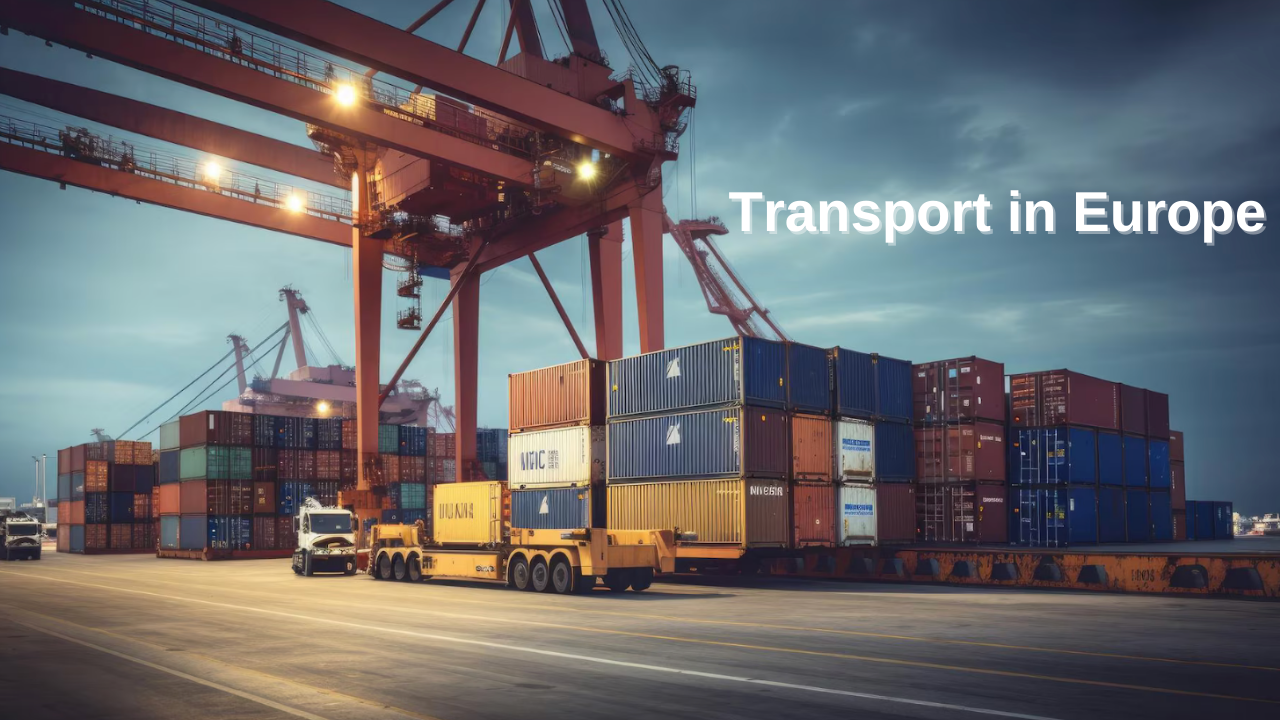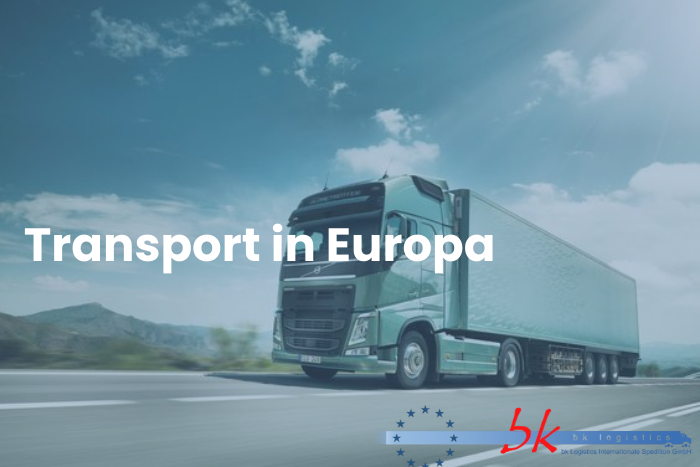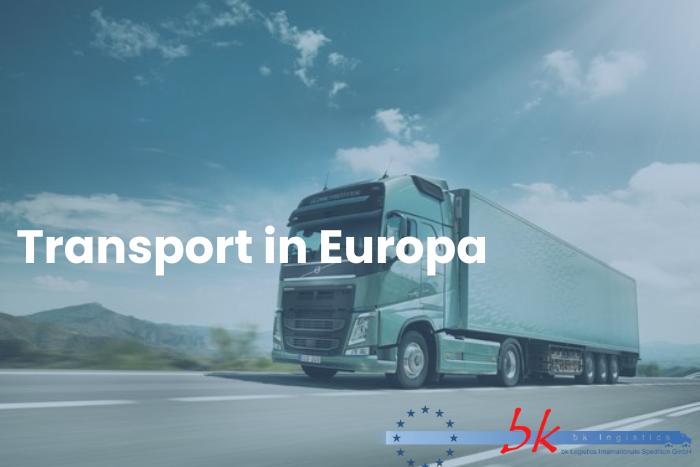News
Transportation in Europe
The importance of transportation in Europe
Europe is a continent that attracts attention with its historical and cultural diversity as well as its developed transportation infrastructure. While transportation represents one of the cornerstones of the continent's socio-economic structure, it paves the way for trade and economic development by transporting people, goods and services quickly and effectively. Transport networks contribute to the unity of Europe as a whole by increasing cultural interaction between countries.
The European Union implements various policies and projects for the development and integration of transportation. Transport in Europe is therefore not just a logistics problem, but also a vital element for economic and social development. Strengthening the transportation infrastructure facilitates the mobilization of individuals and companies and increases competitiveness.
Types of transportation in Europe
The types of transportation available in Europe vary depending on your needs. Main transportation categories include road, rail, air and sea transportation. These types of transport play an important role in both private and commercial transport. Each type has its own advantages and disadvantages.
Road transportation is the most widely used method due to its flexibility and wide transportation network. Over longer distances, rail transport offers a more sustainable option. While air transportation provides fast transportation, sea transportation forms the backbone of international trade. The integration of transport modes contributes to efforts to make the European transport network more efficient while minimizing the impact on the environment.
road transport
Road transport is the most common and flexible means of transport in Europe. Cars, buses and commercial vehicles play an important role in local and regional transportation as they move on an extensive road network. There is an extensive network of motorways and secondary roads in all European countries. This means that both commercial vehicles and individual passengers can travel easily.
The flexibility and speed of road transportation offer significant advantages to many companies. However, the environmental impact of road traffic should not be ignored. Carbon emissions, traffic congestion and air pollution have become major problems in cities. For this reason, many countries encourage the use of electric vehicles and alternative fuels. In addition, expanding bicycle paths and strengthening public transportation systems are also part of sustainable transportation practices.

rail transport
Rail transport is one of the most sustainable modes of transport in Europe. High-speed trains provide fast and comfortable transportation, especially between big cities. For example, TGV trains in France and ICE trains in Germany offer passengers comfortable travel at high speeds. Railway transportation is also a preferred means of transportation for transporting large loads.
Railway offers an important option to reduce environmental impact. Thanks to its ability to carry large loads, it reduces traffic congestion on highways and reduces emissions. However, the railway infrastructure needs to be constantly improved. This is a very important factor in terms of both speed and safety. In addition to high-speed trains, improving local and regional routes can also contribute to greater preference for rail transport.
air transportation
Air transportation allows fast transportation, especially over long distances. Many countries in Europe offer an extensive airline network. The airports involved vary from major cities to smaller, more remote cities. Air transportation plays an important role in both tourism and trade. Europe is world famous for its various tourist destinations, and air transportation makes access to these destinations easier.
In addition to the benefits of air transportation, its impact on the environment should also be taken into account. Airplanes cause more CO2 emissions than other means of transportation. Airlines are trying to solve this problem by using sustainable air transportation methods. Biofuels and more efficient engine technologies are among the solutions developed to reduce environmental impact.
See transport
Maritime transportation forms the basis of international trade. Since there are many large ports in Europe, maritime transport is indispensable, especially for the transportation of goods. While ports form the European trade network, ships also play an important role in maintaining this network. Sea transportation is generally used to transport large amounts of cargo at lower costs.
However, maritime transportation also has an impact on the environment. Issues such as marine pollution, ship accidents and leaks are important problems that need to be solved in the sector. Therefore, it is important to use environmentally friendly alternatives in maritime transportation. For example, alternative fuels and energy-efficient ship designs can help reduce the environmental impact of shipping.
The role of technology in transportation
The advancement of technology also leads to major changes in the transportation sector. Intelligent transportation systems, data analysis and artificial intelligence help make transportation more efficient and safer. In particular, traffic flow and public transportation systems are optimized with real-time data. Smart traffic lights aim to reduce traffic congestion in cities by regulating the flow of vehicles and public transport.
Electric and autonomous vehicles play an important role in shaping the future of transportation. The widespread use of these vehicles has the potential to create a more environmentally friendly and safer transportation system. Autonomous vehicles minimize distraction while driving and reduce the risk of accidents. This increases transportation security.
Sustainable transportation practices
Sustainable transport is at the heart of European transport policy. Many countries have developed various strategies to reduce CO2 emissions. Electric vehicles, bicycle paths and improving public transport systems are part of these strategies. Sustainable transportation practices include elements such as expanding urban cycling and walking paths and promoting environmentally friendly alternatives.
Bicycle sharing systems offer an environmentally friendly alternative to urban transportation. Additionally, widening sidewalks helps people live a healthier lifestyle and contributes to making cities more livable. In the future, Europe wants to create a more environmentally friendly transportation network with sustainable transportation practices.
Transport and economy in Europe
Transport plays a crucial role in Europe's economic growth. Facilitating trade leads to an improvement in the investment environment and an increase in employment opportunities. Transport infrastructure supports economic activity by increasing the mobility of businesses and individuals. Therefore, governments encourage economic development by investing in transportation projects.
Especially large transportation projects are important in terms of creating employment and developing the local economy. Transportation projects, which have far-reaching impacts from the construction sector to the service sector, support regional development. For this reason, transportation policy in Europe is designed in parallel with economic growth targets.
Future transportation trends
Going forward, several important trends are expected to emerge in the transportation space. Electrification, automation and digitalization will be important factors in shaping transportation. The introduction of electric vehicles and alternative fuels will minimize the impact on the environment by reducing the use of fossil fuels.
The development of autonomous vehicle technology will increase transportation safety and reduce traffic congestion. Integration of smart city applications, data analytics and mobility services will help make transportation systems more efficient. These trends will lead to Europe's transport infrastructure becoming more sustainable and accessible in the future.
Security in transportation
Road safety is one of Europe's top priorities. Serious injuries and deaths occur in transportation accidents every year. Therefore, it is of great importance to increase safety standards and expand training programs. Governments are trying to find a solution to this problem by developing various road safety campaigns and projects.
Intelligent transportation systems play an important role in increasing safety. For example, advanced sensors and camera systems monitor traffic flow and help prevent accidents. Among the elements that support safety are systems that require the driver to increase their attention. Improving transportation safety benefits both individuals and society.
Development of traffic policies
Transport policy in Europe has changed over the years. While the focus was initially on investments in transportation infrastructure, over time sustainability and environmental impacts began to be taken into account. The European Union has developed various regulations and financing programs to ensure transportation integration among member countries.
These guidelines aim to increase efficiency in both private and commercial transportation. Integration of transport systems offers economic advantages thanks to shorter travel times and lower costs. It is expected that transport policy will focus more on sustainability in the future.
Europe's transport infrastructure
European transport infrastructure has an extensive network covering various transport modes. There are advanced systems in road, rail, air and sea transportation. In particular, high-speed routes and extensive motorway networks form the basis of the European transport system.
While ports play an important role in maritime transportation, airports also support air transportation. Continuous improvement of Europe's transport infrastructure contributes to economic growth by increasing the mobility of individuals and businesses. Infrastructure investments also contribute to employment creation and the development of the local economy.
Targets and strategies in transportation
Europe has set concrete goals and strategies for itself in the transport sector. These goals include promoting sustainable transport, reducing CO2 emissions and improving transport safety. For this reason, each country contributes to the general goals of Europe by developing its own transportation strategies.
Transportation strategies are supported by the integration of innovation and technology. Promoting electric vehicles, strengthening public transport systems and expanding alternative transport methods will help Europe achieve its transport goals. Implementation of these strategies will both reduce environmental impacts and support economic development.



